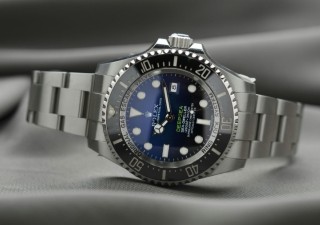As China increases its efforts to protect intellectual property rights, both domestic and overseas patent owners are increasingly protecting their inventions by instituting legal proceedings of infringement in order to gain a leading competitive advantage in market economic activities. When faced with allegations of patent infringement, the first countermeasure usually taken by the accused infringer is to file a request for declaring the invalidity of the patent at issue with the China National Intellectual Property Administration (CNIPA). After receiving the Notification of Acceptance of Request for Invalidation filed by the accused patent infringer, the court will generally suspend the trial of the patent infringement case until CNIPA makes a decision on the examination of the invalidation request. Any party who is dissatisfied with the decision on the examination of the invalidation request may institute a patent administrative litigation against the decision on the examination of the invalidation request. This article will introduce the relevant patent invalidation and patent administrative litigation procedures in China.
Patent invalidation procedure
Petitioner and time of filing request for patent invalidation
Usually, a request for declaring the invalidity of a patent is filed by the party accused of patent infringement, but anyone or any organization has the right to file a request for declaring the invalidity of the relevant patent. When a product manufactured or sold by a company may fall within the protection scope of a competitor’s patent but the competitor has not instituted a patent infringement lawsuit, the company can file a request for declaring the invalidity of the competitor’s patent at any time in the name of a straw man, so as to prevent the competitor (the patent owner) from knowing the true identity of the company (a petitioner). When a patent owner files a patent infringement lawsuit, the party accused of patent infringement will usually submit a request for declaring the invalidity of the patent at issue with CNIPA and, within 15 days upon receipt of the notice of response to action issued by the court, submit to the court a Notification of Acceptance of the Request for Invalidation and apply to suspend the trial of the patent infringement lawsuit. However, it is difficult for the petitioner (the party accused of patent infringement) to prepare a request for declaring the invalidity of the patent at issue with sufficient reasons and evidence within 15 days. Usually, the petitioner may first prepare a simple request for declaring the invalidity of the patent at issue to obtain a Notification of Acceptance of the Request for Invalidation, and then submit the detailed reasons and sufficient evidence within one month of filing the simple request.
Grounds and evidence for patent invalidation
In practice, most of the patents declared invalid are invalidated on the grounds of lacking novelty or not involving an inventive step. However, the petitioner may also request a patent to be declared invalid on the grounds of violating the principle of good faith, violating confidentiality examination regulations, lacking essential technical features in the independent claim, lacking clarity of the claims, lacking support of the claims from the description, and failing to insufficiently disclose the invention in the description. These grounds for patent invalidation may be raised at the time of submitting the invalidation request or may be supplemented within one month from the date of submitting the invalidation request. Except for directing to the claims amended by the patentee in a way other than deletion of the claim or the technical solution, as well as the changes to the grounds for patent invalidation that are inconsistent with the submitted evidence, the grounds for patent invalidation supplemented by the petitioner after one month from the date of filing the invalidation request will not generally be taken into consideration. The petitioner may file one new request for patent invalidation based on these additional new grounds for patent invalidation. The petitioner needs to elaborate in detail on the relevant grounds for patent invalidation in combination with the evidence. Except for the supplementary evidence against the counterevidence raised by the patentee, the evidence supplemented by the petitioner after one month from the date of filing the invalidation request will not generally be considered. However, either the petitioner or the patentee may present the common knowledge evidence before the oral hearing is closed.
Amendments to patent documents in the patent invalidation procedure
The patentee may amend the claims of a patent for an invention or utility model within one month from the date of receipt of the Notification of Acceptance of Request for Invalidation, but cannot amend the patent document of a design patent at all. The patentee can amend the claims only directed to the grounds for patent invalidation raised by the petitioner or the defects pointed out by the collegial panel.
The amendments to the claims shall follow the following basic principles: a) the title of the subject matter of a claim cannot be changed; b) the scope of protection cannot be extended as compared with that in the granted patent; c) the amendment shall not go beyond the scope of disclosure contained in the initial description and claims; and d) addition of technical features not included in the claims as granted is not generally allowed. The specific manners of amending the claims are generally limited to a) deletion of one or more claims, b) removal of at least one technical solution from several parallel technical solutions defined in one claim, and c) further definition of the claim. Further definition of the claim means adding one or more technical features recited in other claims into this claim to narrow the scope of protection of this claim. As can be seen, the patentees are subject to many limitations on amending the claims during the patent invalidation proceeding. Once the amended claims have not been accepted due to failure to meet these limitations, the collegial panel will examine the request for patent invalidation based on the claims as granted.
Oral hearing of invalidation request and examination decision on request for patent invalidation
To ascertain the facts through investigation and to provide the concerned parties with an opportunity to make observations before the collegial panel, the panel of three examiners, before making a decision on the request for patent invalidation, will usually conduct an oral hearing on the invalidation request. Where the petitioner fails to appear in the oral hearing proceeding, the request for patent invalidation shall be deemed withdrawn. Where the patentee does not appear in the oral hearing proceeding, the oral hearing may be taken by default. Several requests for patent invalidation directed to the same patent shall be heard jointly whenever possible, but the evidence in the cases jointly heard cannot be used in a combinative way. Within about two to three months after the oral hearing, the collegial panel will make an examination decision for a request for patent invalidation, which is declaring a patent right invalid in whole or in part or maintaining the validity of a patent right. It takes about five to six months from filing a request for patent invalidation to receiving the examination decision on the request for patent invalidation.
The number of patent invalidation request cases accepted and concluded by the CNIPA in 2022 and 2023 are as follows:
|
Date
|
Requests accepted
|
Requests concluded
|
|
2022
|
7,095
|
7,879
|
|
2023
|
8,739
|
7,656
|
These data are published by CNIPA.
In the past two years, the rate at which the examination decisions on the request for patent invalidation made by the CNIPA are revoked by the court is approximately 6.9 percent.
Special attention on invalidating utility model patent
As is well-known, the standard of inventiveness of Chinese utility model patents is lower than that of Chinese invention patents. In the patent invalidation procedure, this difference in the standard of inventiveness between utility model patents and invention patents is specifically reflected in two aspects. The first aspect is the technical field of prior art. For invention patents, not only the technical fields to which the invention patent belongs should be considered, but also its similar or related technical fields and other technical fields in which the technical problem to be solved by the invention can prompt the persons skilled in the art to look for the technical means should be considered. For utility model patents, the technical field generally focuses on which the utility model patent belongs. The second aspect is the number of prior art references. For invention patents, one, two or more pieces of prior art references can be cited against the inventiveness. However, one or two pieces of prior art references can generally be cited against the inventiveness of a utility model patent.
Patent administrative litigation procedure
First-instance procedure of patent administrative litigation
Where the patentee or the petitioner is dissatisfied with the examination decision on the request for patent invalidation made by the CNIPA, he or she may institute a patent administrative lawsuit before the Beijing Intellectual Property Court against the examination decision on the request for patent invalidation within three months of receiving the examination decision. The CNIPA will be the defendant in the patent administrative lawsuit. The Beijing Intellectual Property Court will notify the other party to participate in the patent administrative lawsuit as a third party. The plaintiff may request the Beijing Intellectual Property Court to examine the procedural and/or factual issues in the accused examination decision on the request for patent invalidation. The Beijing Intellectual Property Court usually makes a first-instance judgment to maintain or revoke the examination decision on the request for patent invalidation within six to 12 months. In 2023, the revocation rate by the Beijing Intellectual Property Court for the patent reexamination and invalidation administrative lawsuit cases was approximately 3.8 percent.
Second-instance procedure of patent administrative litigation
Any party dissatisfied with the first-instance judgment made by the Beijing Intellectual Property Court may appeal to the Intellectual Property Court of the Supreme People’s Court within 15 days (30 days for foreign parties) from the date of receipt of the first-instance judgment and request a reexamination of the disputed examination decision on the request for patent invalidation and the first-instance judgment. The Intellectual Property Court of the Supreme People’s Court usually will make a second-instance judgment to revoke or maintain the first-instance judgment within 12 to 18 months, and the second-instance judgment is final.
The administrative lawsuit cases on patent invalidation requests accepted by the Intellectual Property Court of the Supreme People’s Court in 2022 and 2023 are as follows:
|
Date
|
Invention
|
Utility Model
|
Design
|
Revocation rate (%)
|
|
2022
|
234
|
207
|
84
|
4.9
|
|
2023
|
365
|
330
|
139
|
8.7
|
These data are extracted from 2023 Annual Report of the Intellectual Property Court of the Supreme Court.
New evidence in patent administrative litigation procedure
Whether in the first instance or the second instance of the patent administrative litigation procedure, the defendant, appellee or third party may usually submit new evidence within 15 days of receiving the notice of response to action issued by the court. The court should generally examine the new evidence provided by the patentee to prove that the patent right should remain valid, but the court will not generally examine any new evidence other than the common knowledge provided by the petitioner in the patent administrative litigation procedure.
As can be seen from above, whether the examination decision on the request for patent invalidation made by the CNIPA is effective should be justified by the court in most cases. Since the revocation rate for the examination decisions on the request for patent invalidation in the patent administrative litigation procedures is currently very low, whether for the patentee or for the accused patent infringer, how to obtain a favourable examination decision on the request for patent invalidation in the patent invalidation procedure is very crucial to the final outcome of the patent infringement lawsuit.
About the author
Honggui Cai [AL1] is a senior partner, attorney at law, patent attorney and group leader at NTD Intellectual Property Attorneys in China. Prior to joining NTD in 1999, he worked as a mechanical engineer for five years. Over the years, he has prepared and prosecuted thousands of patent applications for domestic and foreign clients, including drafting hundreds of patent applications in English. He has developed considerable experience in patent practice, including prosecution, reexamination and invalidation practice. He has handled more than 300 patent invalidation and litigation cases and thus developed particular experience in patent infringement assessment and patent litigation as well as related matters. He has been appointed as an agent of many well-known companies such as Philips, Webasto, Schaeffler, Amphenol, Bosch, Schindler and Vestas to handle matters related to patent prosecution, patent analysis, patent invalidation and patent litigation and has won high praise from customers.









